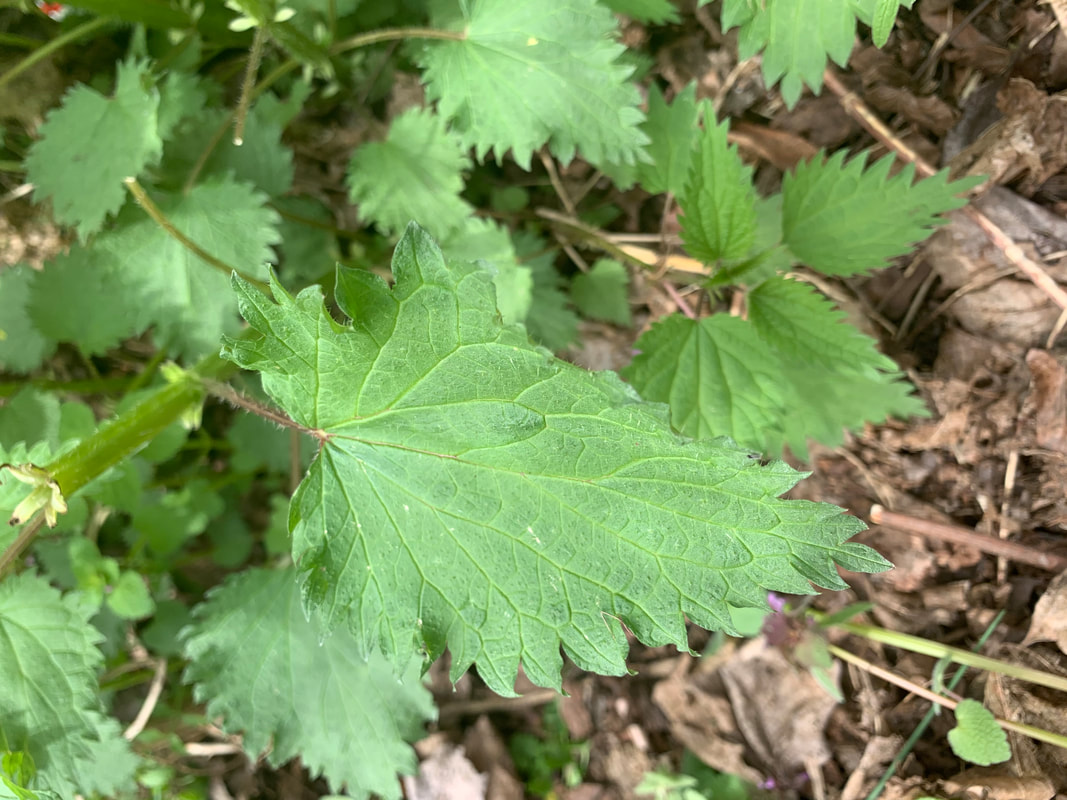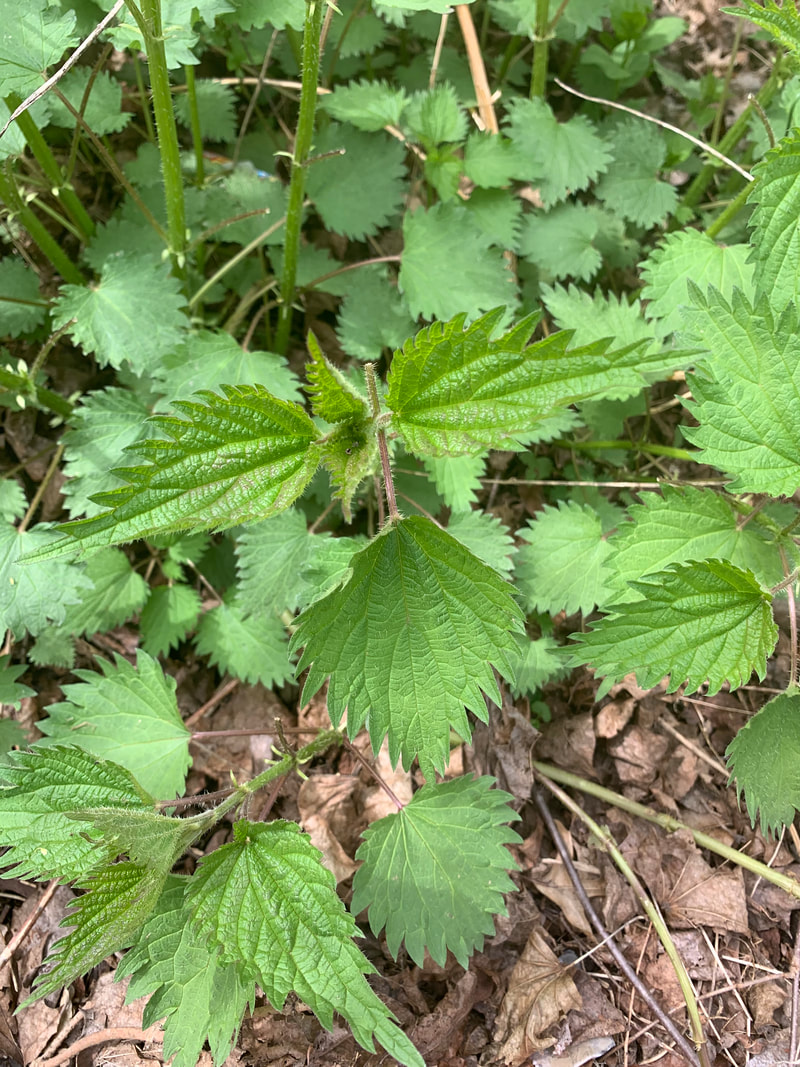|
Stinging nettle (Urtica dioica) has been used for thousands of years for a almost everything. Food, tea, medicine, rope, cloth, the dye to color that cloth; you name it, nettle has been used for it. If you're going to try using stinging nettle, yourself, make sure you wear gloves! The name, Urtica comes from the latin word urere, meaning to burn. Touching stinging nettle results in a burning rash that can last for hours. The hairs covering stinging nettles aren't hairs at all. They're tiny hollow needles of silica. When you brush against them, those needles break off and lodge in your skin, injecting you with histamine, acetylcholine, serotonin, formic acid, tartaric acid, and oxalic acid. This mix of chemicals causes a reaction that can include pain, itchiness, swelling, and redness. SO WHY WOULD YOU EVER TRY PICKING IT!?!? Medicine: Stinging nettle has myriad medicinal uses. Studies have shown that nettle root can relieve some of the symptoms of an enlarged prostate. The leaves have been applied directly to the skin as a treatment for arthritis. An extract of the leaves has led to osteoarthritis patients lowering their NSAID dose. Consumption of nettle has anecdotally been linked to lessening the symptoms of hay fever. In addition to these medicines, nettle has been used to treat almost every illness or issue. Food: In order to prevent your insides from itching, stinging nettle must be cooked, dried, or steeped before you ingest it. If you are unsure why you shouldn't eat stinging nettle raw, please go back to the beginning and start reading from the top. The leaves of stinging nettle make an excellent food source, especially in the early spring when it is just popping up. They contain iron, calcium, magnesium, potassium, beta-carotene, and lutein, as well as vitamins A, B, C, and K. You can sautee the leaves in place of spinach, make a tasty soup, or steep the leaves for a refreshing tea. Try adding them to lasagna or pureeing them to help stretch a pesto! Where and how to find them: Whether you want to try them or just stay away, identifying stinging nettle is fairly simple. Just brush up against every plant you see, the one that hurts is the one you want! Or you can take a close look at the leaves and stem.
Happy Gardening!
1 Comment
8/3/2022 07:21:16 am
Edirne Viessman servisi için hemen websitemize göz at! https://www.edirneklimaservisi.com/edirne-viessmann-servisi/
Reply
Leave a Reply. |
ArchivesCategories |


 RSS Feed
RSS Feed
